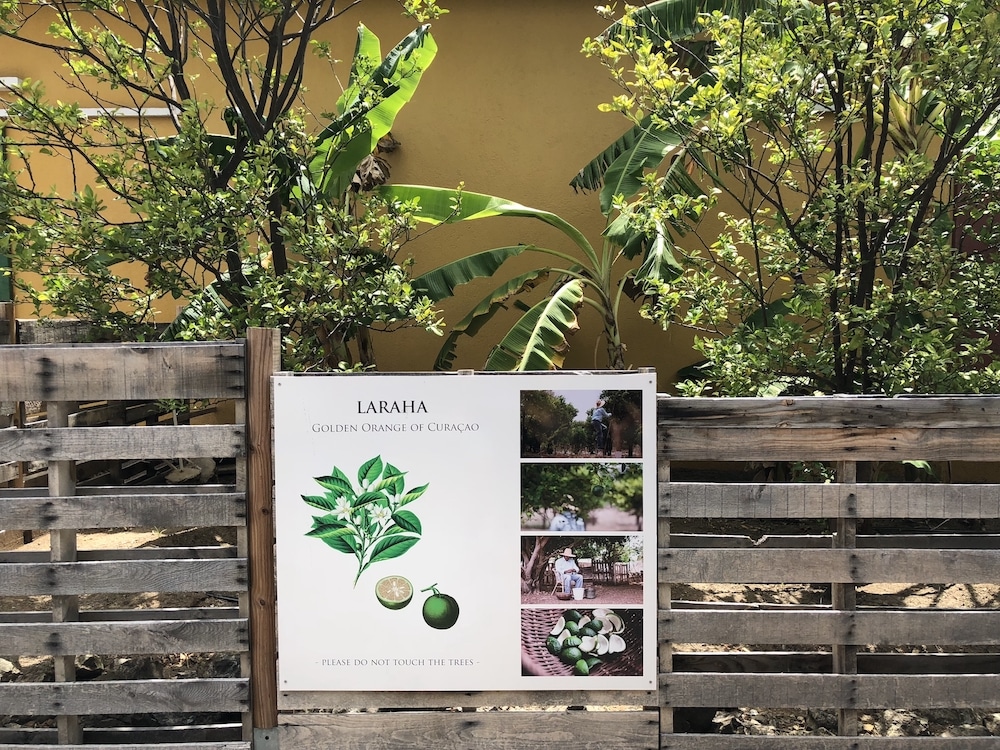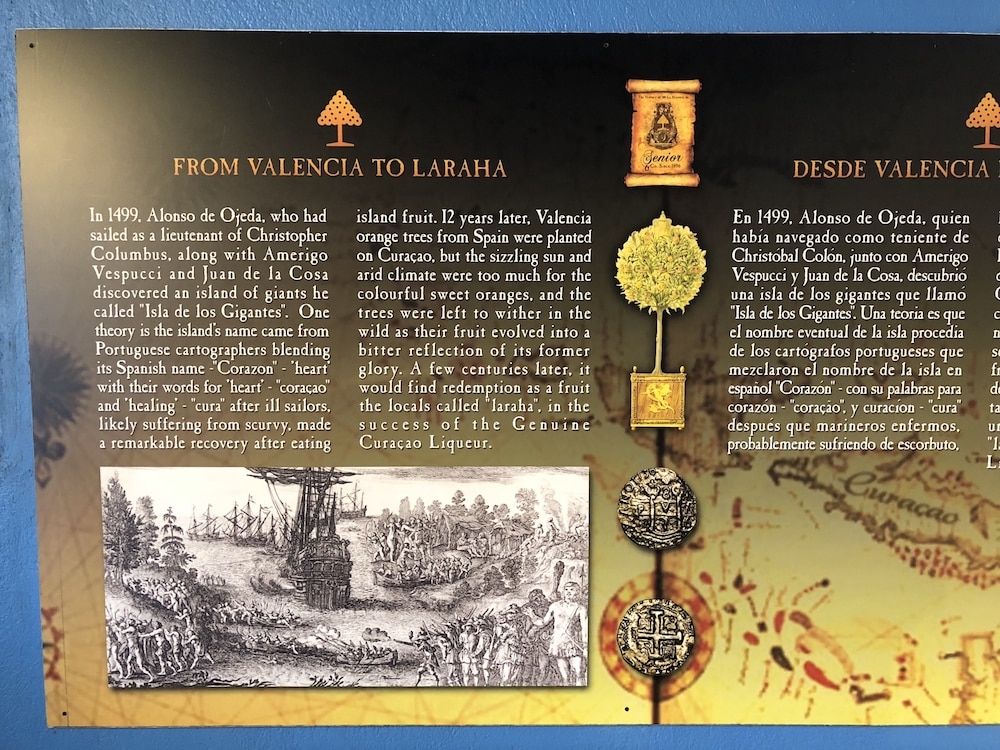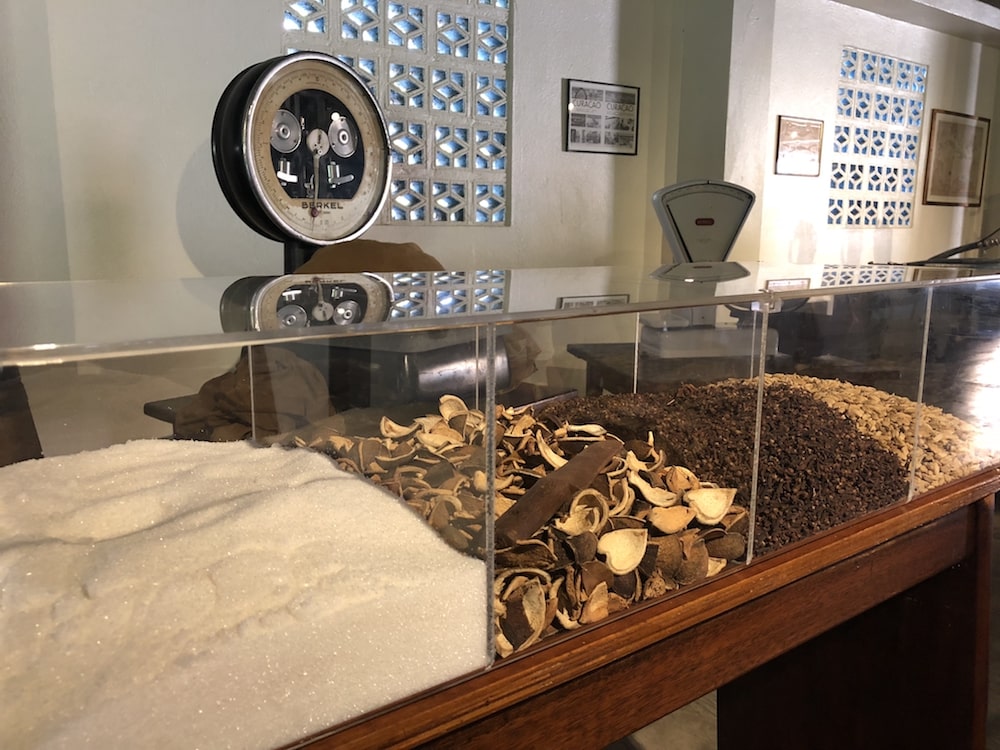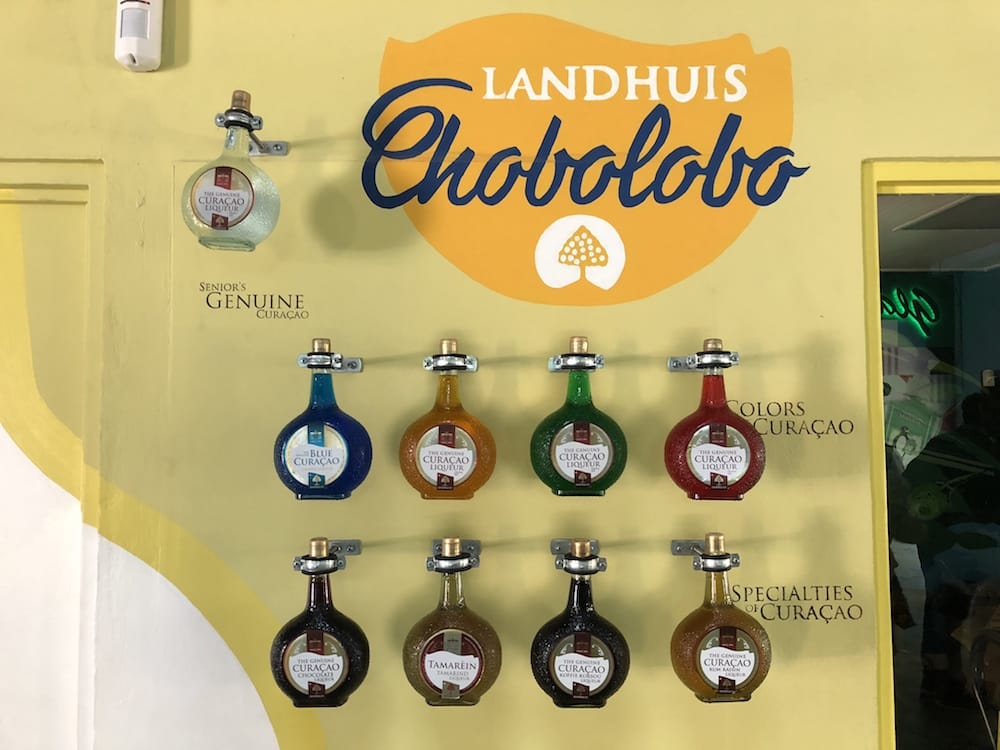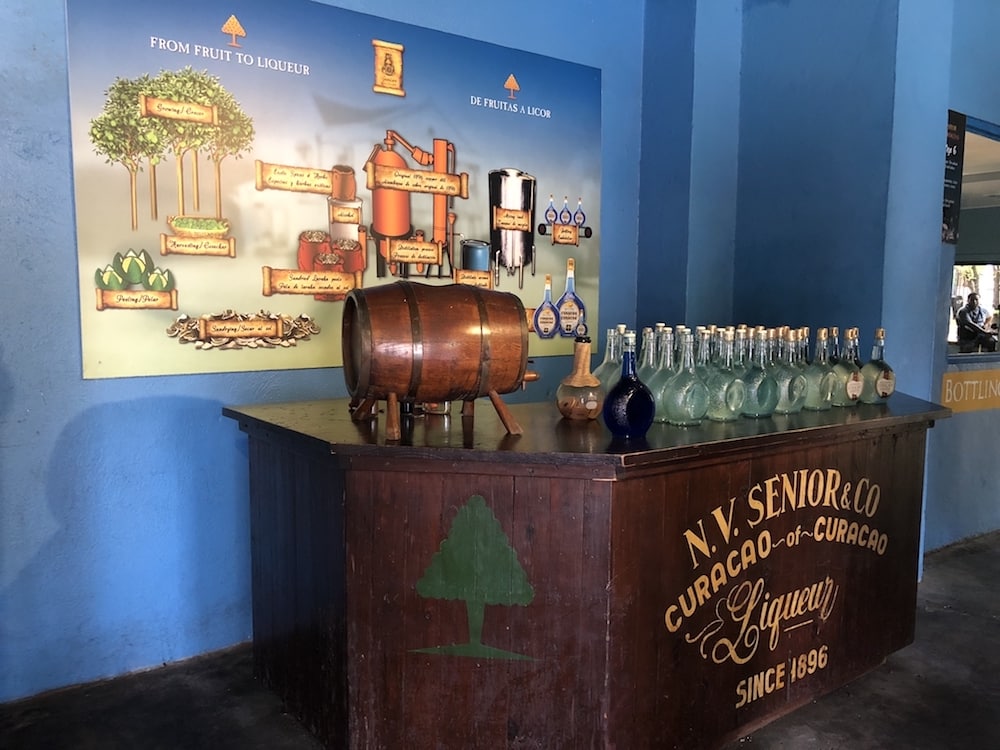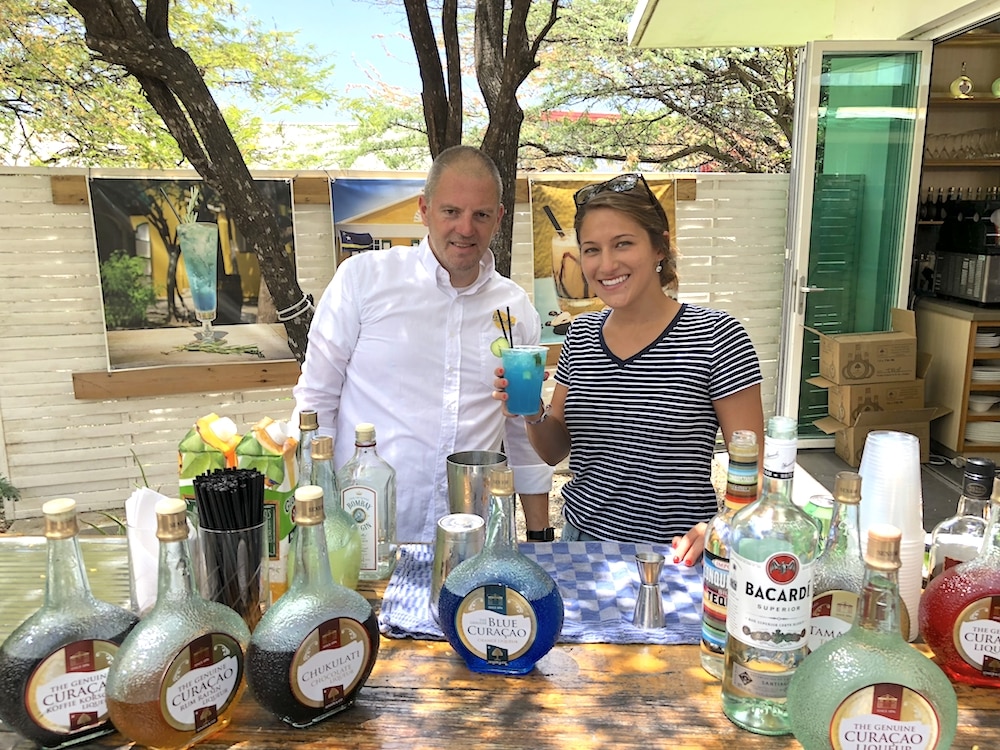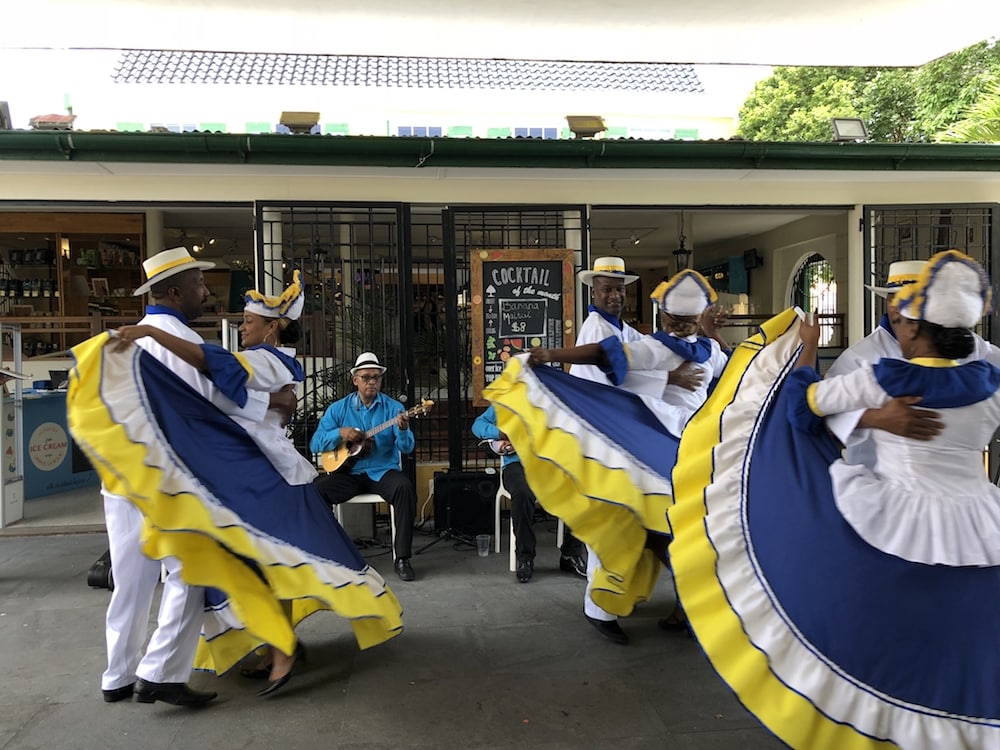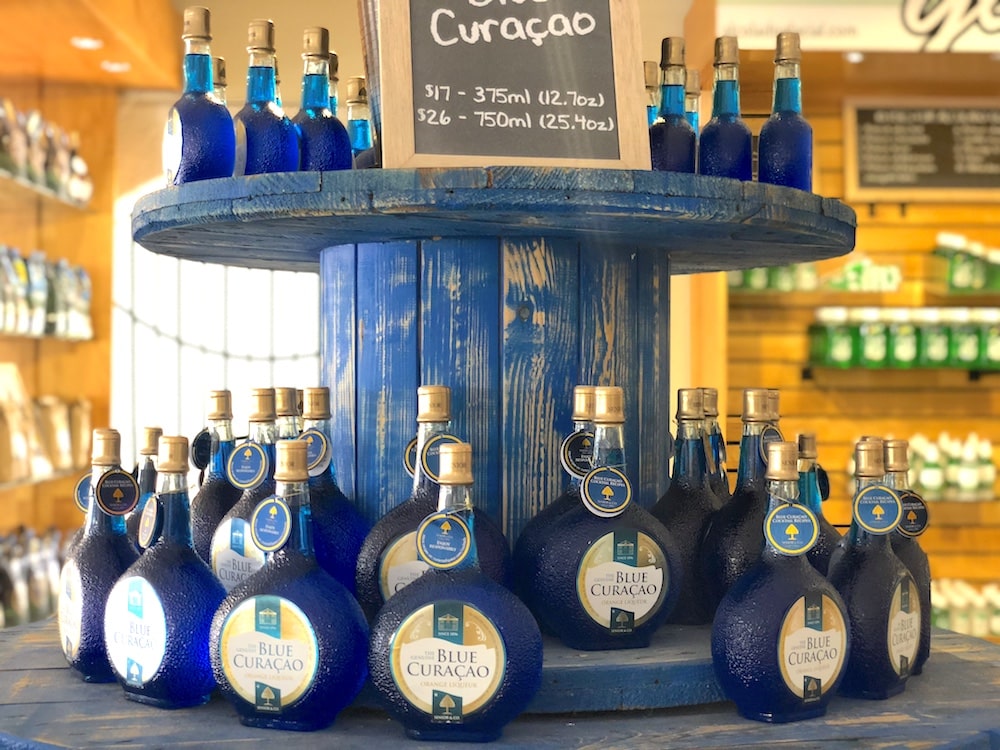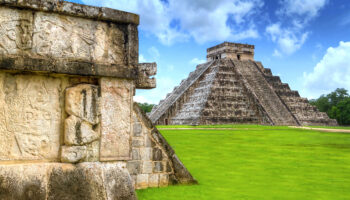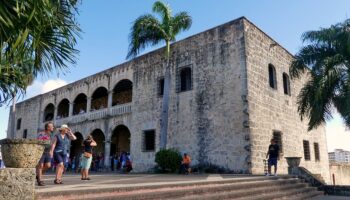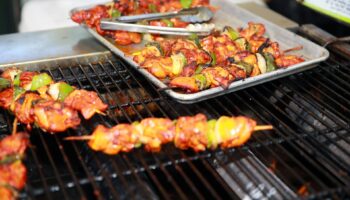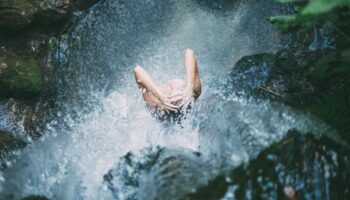If you’ve ever enjoyed (and Instagrammed) a fruity cocktail in a bright shade of blue, you have the island of Curaçao to thank. The launching point of blue Curaçao is home to the original blue Curaçao distillery, Landhuis Chobolobo. Lucky for you, the distillery welcomes visitors to take a tour and learn about all things blue Curaçao.
Read on to learn the real history behind the world-famous tropical liquor that’s responsible for the blue hue of so many of those Instagrammable cocktails.
A Quick History of Blue Curaçao
Oddly enough, blue Curaçao is traditionally made from the dried peels of the laraha bitter orange from Spain. So how did Curaçao become the top producer of this special drink?
The laraha orange now grows on Curaçao but it originated from the Seville orange, which Spanish explorers brought over in the early 1500s. You wouldn’t want to eat a laraha orange, as the peels and flesh are quite bitter, but fortunately, someone along the way figured out that their pleasant aroma makes for a great ingredient in a flavorful island liqueur.
To make blue Curaçao, peels of the laraha orange are dried and soaked in alcohol. Then, the distillers add a blend of spices and hang a bag of the mixture in a copper still for three days. After, they add water and distill for another three days. The end result is an orange-tasting liqueur, but surprisingly…it’s not blue. In fact, it’s completely colorless!
So, where does the blue color come from? I hate to break it to you, but the answer is a little underwhelming. It doesn’t come that way due to a magical natural process, but rather blue Curaçao is blue because it’s artificially colored with food coloring. The liqueur is naturally clear and distillers had the bright idea to add in an electric blue coloring to give the liqueur an exotic and easily brandable appeal, and thus, blue Curaçao was born.
Today, blue Curaçao is available in a variety of flavors and colors. That’s right: it may not surprise you now that you know the blue hue is only the result of a food colorant, but blue Curaçao doesn’t only come in blue! You can also find it in green, red and orange at Landhuis Chobolobo. Additionally, you can try alternative flavors of Curaçao liqueur, like rum raisin, tamarind, chocolate and coffee.
Touring Landhuis Chobolobo
Want to learn more about blue Curaçao—its history, how it’s made, and maybe even try a few samples? Head to Landhuis Chobolobo, home of genuine blue Curaçao and its production since 1896. You’ll walk through the distilling area with a tour guide, who fills you in on everything from the making of blue Curaçao to the history of the island of blue Curaçao. Learn the process behind this delicious drink mix-in and see the production stages up-close.
After touring the distillery and getting a glimpse of the antique machinery used to create blue Curaçao, you end up at the best part: tasting time! Snack on pastechis (like Curaçaon empanadas) and get a taste of all the flavors of Curaçao liqueur you could ever hope to try. You can even create a Curaçao cocktail of your own.
If you’re lucky, you’ll be treated to a dance performance by local performers in traditional Curaçaon dress as you sip and shop the Landhuis Chobolobo gift shop. There are also snacks available for purchase (and, of course, more cocktails!).
How to Spot Authentic Blue Curaçao
If you’re looking to scout out real, authentic blue Curaçao, you need two tips to be able to spot it. The authenticity of a bottle of blue Curaçao comes down to the shape and texture of the bottle.
The shape of a genuine bottle of blue Curaçao from Curaçao is circular (like an orange) at the bottom with a narrow neck or handle spouting straight up from the center. In addition, the sides of the round part of the bottle will have a bumpy texture, to mimic the peel of an orange.
Thus, if the bottom of your bottle of blue Curaçao isn’t the shape and feel of an orange, you don’t have the authentic Curaçaon liqueur. You may have a blue impostor, but you can bet it didn’t originate at Landhuis Chobolobo on the island of Curaçao.
Shop at the gift shop at Landhuis Chobolobo to ensure you’re buying the real thing, or exercise your blue Curaçao spotting skills at the airport in Curaçao, where the duty-free shop offers a variety of liquor to take home tax-free—blue Curaçao included.
